
Charles Soret (born 23 September 1854, Geneva, Switzerland; died 4 April 1904) was a Swiss physicist and chemist. He is known for his work on thermodiffusion (the so-called Soret effect).

Charles Soret (born 23 September 1854, Geneva, Switzerland; died 4 April 1904) was a Swiss physicist and chemist. He is known for his work on thermodiffusion (the so-called Soret effect).
Charles Soret was the son of Jacques-Louis Soret, professor of physical medicine at University of Geneva, and Clémentine Odier. In 1872, Charles graduated from an art college in Geneva and, two years later, he added a degree in mathematics. In addition, he also attended lectures in physics and other sciences. He continued studies in mathematics at the Sorbonne, where he received his MA in 1876. He believed that a good physicist is first of all a good mathematician; therefore, only afterwards he focused on physics in which he obtained a master's degree two years later. [1]
Soon, he was offered a place in the Department of crystallography and mineralogy at the University of Geneva. There, in 1879, he became a lecturer and a full professor in 1881.
In 1879, he published his first discussion on thermodiffusion on the basis of experiments with solutions of NaCl and KNO3 in pipes with heated or cooled ends. He noticed higher concentrations at the cooler end of the pipe. His experiments confirmed the results of C. Ludwig (published 20 years earlier) of which Soret probably did not know.
In addition to thermal migration, he also conducted research on refractometry.
In 1898, he became the rector of the University of Geneva. He died in April 1904 due to gastrointestinal illness, a few days after a successful operation.

Leon Max Lederman was an American experimental physicist who received the Nobel Prize in Physics in 1988, along with Melvin Schwartz and Jack Steinberger, for research on neutrinos. He also received the Wolf Prize in Physics in 1982, along with Martin Lewis Perl, for research on quarks and leptons. Lederman was director emeritus of Fermi National Accelerator Laboratory (Fermilab) in Batavia, Illinois. He founded the Illinois Mathematics and Science Academy, in Aurora, Illinois in 1986, where he was resident scholar emeritus from 2012 until his death in 2018.
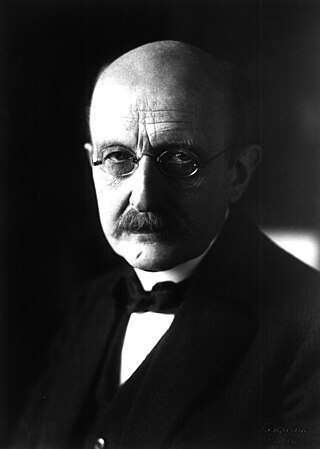
Max Karl Ernst Ludwig Planck was a German theoretical physicist whose discovery of energy quanta won him the Nobel Prize in Physics in 1918.

William Thomson, 1st Baron Kelvin, was a British mathematician, mathematical physicist and engineer born in Belfast. He was the Professor of Natural Philosophy at the University of Glasgow for 53 years, where he undertook significant research and mathematical analysis of electricity, the formulation of the first and second laws of thermodynamics, and contributed significantly to unifying physics, which was then in its infancy of development as an emerging academic discipline. He received the Royal Society's Copley Medal in 1883, and served as its president from 1890 to 1895. In 1892, he became the first British scientist to be elevated to the House of Lords.

Harold Paul Furth was an Austrian-American physicist who was a pioneer in leading the American efforts to harness thermonuclear fusion for the generation of electricity. He died of a heart ailment on 21 February 2002.

John Stewart Bell FRS was a physicist from Northern Ireland and the originator of Bell's theorem, an important theorem in quantum physics regarding hidden-variable theories.
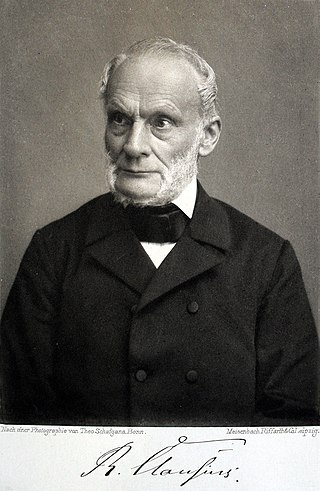
Rudolf Julius Emanuel Clausius was a German physicist and mathematician and is considered one of the central founding fathers of the science of thermodynamics. By his restatement of Sadi Carnot's principle known as the Carnot cycle, he gave the theory of heat a truer and sounder basis. His most important paper, "On the Moving Force of Heat", published in 1850, first stated the basic ideas of the second law of thermodynamics. In 1865 he introduced the concept of entropy. In 1870 he introduced the virial theorem, which applied to heat.
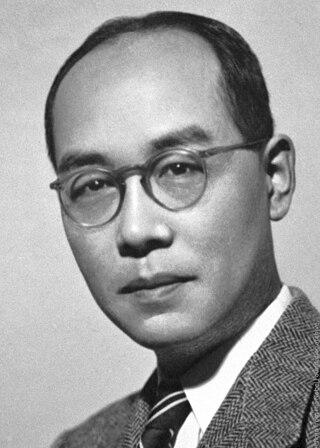
Hideki Yukawa was a Japanese theoretical physicist and the first Japanese Nobel laureate for his prediction of the pi meson, or pion.
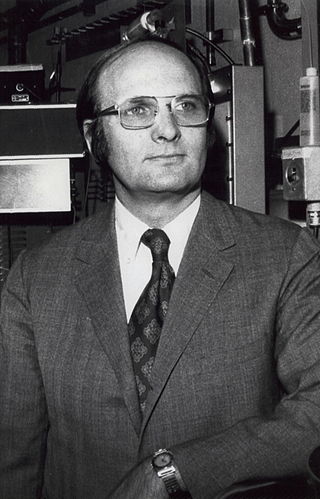
John Robert Schrieffer was an American physicist who, with John Bardeen and Leon Cooper, was a recipient of the 1972 Nobel Prize in Physics for developing the BCS theory, the first successful quantum theory of superconductivity.

Val Logsdon Fitch was an American nuclear physicist who, with co-researcher James Cronin, was awarded the 1980 Nobel Prize in Physics for a 1964 experiment using the Alternating Gradient Synchrotron at Brookhaven National Laboratory that proved that certain subatomic reactions do not adhere to fundamental symmetry principles. Specifically, they proved, by examining the decay of K-mesons, that a reaction run in reverse does not retrace the path of the original reaction, which showed that the reactions of subatomic particles are not indifferent to time. Thus the phenomenon of CP violation was discovered. This demolished the faith that physicists had that natural laws were governed by symmetry.
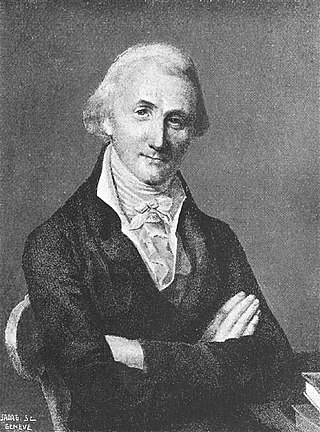
Pierre Prévost was a Genevan philosopher and physicist. In 1791 he explained Pictet's experiment by arguing that all bodies radiate heat, no matter how hot or cold they are.
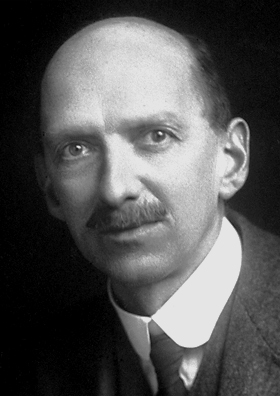
Charles Thomson Rees Wilson, was a Scottish physicist and meteorologist who won the Nobel Prize in Physics for his invention of the cloud chamber.

Paul Hermann Scherrer was a Swiss physicist. Born in St. Gallen, Switzerland, he studied at Göttingen, Germany, before becoming a lecturer there. Later, Scherrer became head of the Department of Physics at ETH Zurich.

Jacques-Louis Soret was a Swiss chemist and spectroscopist. He studied both spectroscopy and electrolysis. He held the chairs of chemistry (1873-1887) and medical physics (1887-1890) at the University of Geneva.

Ernst Carl Gerlach Stueckelberg was a Swiss mathematician and physicist, regarded as one of the most eminent physicists of the 20th century. Despite making key advances in theoretical physics, including the exchange particle model of fundamental forces, causal S-matrix theory, and the renormalization group, his idiosyncratic style and publication in minor journals led to his work not being widely recognized until the mid-1990s.

Alfred Kleiner was a Swiss physicist and Professor of Experimental Physics at the University of Zurich. He was Albert Einstein's doctoral advisor or Doktorvater. Initially Einstein's advisor was Heinrich F. Weber. However, they had a major falling out, and Einstein chose to switch to Kleiner.
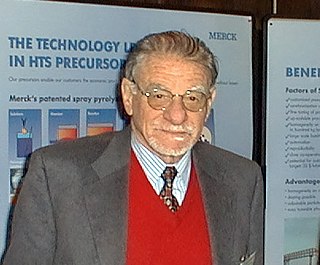
Karl Alexander Müller was a Swiss physicist and Nobel laureate. He received the Nobel Prize in Physics in 1987 with Georg Bednorz for their work in superconductivity in ceramic materials.
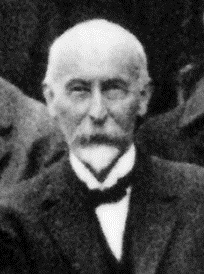
Charles-Eugène Guye was a Swiss physicist. He was born in Saint-Christophe (Champvent) and died in Geneva.

Peter Jenni, is an experimental particle physicist working at CERN. He is best known as one of the "founding fathers" of the ATLAS experiment at the CERN Large Hadron Collider together with a few other colleagues. He acted as spokesperson of the ATLAS Collaboration until 2009. ATLAS is a world-wide collaboration which started in 1992 involving roughly 3,000 physicists at 183 institutions in 38 countries. Jenni was directly involved in the experimental work leading to the discoveries of the W and Z bosons in the 1980s and the Higgs boson in 2012. He is (co-)author of about 1000 publications in scientific journals.

Prof Joseph David Everett DCL FRSE (1831–1904) was an English physicist, professor of natural philosophy at Queen's College, Belfast.

Marzio Nessi, is an experimental physicist with a focus on high-energy and high-intensity particle physics.